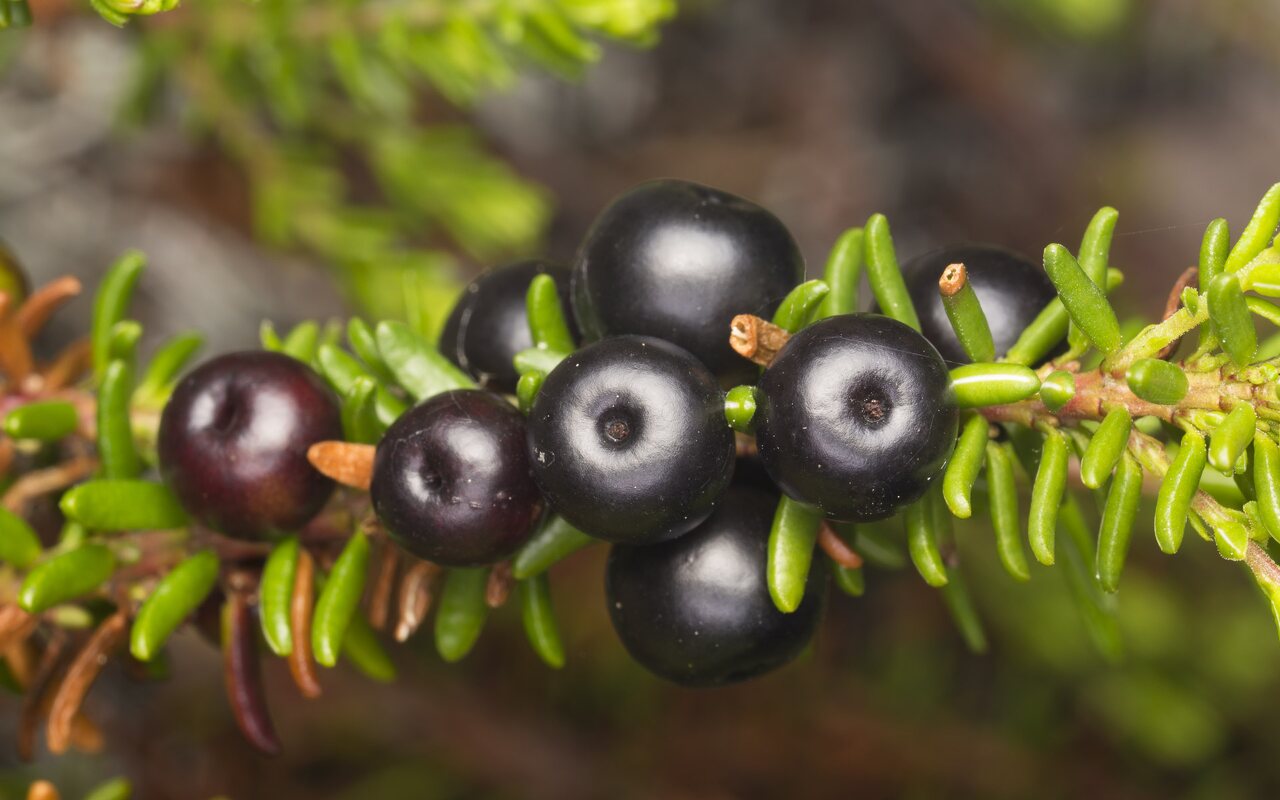
Empetrum nigrum, berries · juodoji varnauogė, uogos
- black crowberry
- Schwarze Krähenbeere
- juodoji varnauogė
- melnā vistene
- bażyna czarna
The species has a near circumboreal distribution in the Northern Hemisphere. It is also native in the Falkland Islands. Evolutionary biologists have explained the striking geographic distribution of crowberries as a result of long-distance migratory birds dispersing seeds from one pole to the other. Empetrum nigrum grows in bogs and other acidic soils in shady, moist areas.
Empetrum nigrum is a low growing, evergreen shrub with a creeping habit. The leaves are 3–6 mm long, arranged alternately along the stem. The stems are red when young and then fade to brown. It blooms between May and June. The flowers are small and not very noticeable, with greenish-pink sepals that turn reddish purple. The round fruits are drupes, 4–6 mm wide, usually black or purplish-black but occasionally red.
The fruit is edible and can be dried, but has an acidic taste. It is best mixed with other berries in dishes like pies and puddings. It is abundant in Scandinavia and treasured for its ability to make liqueur, wine, juice, or jelly. In subarctic areas, the plant has been a vital addition to the diet of the Inuit and the Sami. The species can also be grown as a ground cover, or as an ornamental plant in rock gardens.
Visžalis daugiametis, šliaužiantis augalas. Stiebas plonas, iki 100 cm ilgio, su bambliais. Lapai su trumpais koteliais, beveik odiški, išsilaiko ant augalo apie 3-5 metus. Žiedai auga lapų pažastyse. Vainiklapiai rausvi arba tamsiai raudoni. Žydi gegužės mėn. Vaisius – kaulavaisis, kuris sultingas, juodos spalvos. Vaisiai subręsta rugpjūčio mėn. ir dažnai išsilaiko per žiemą. Auga aukštapelkėse, smėlynuose, pušynuose. Uogos valgomos, blankaus konio. Lietuvoje uogų užauga negausiai. Šiauriniuose kraštuose derlinga.
‥
0 comments
Add a comment
Comments